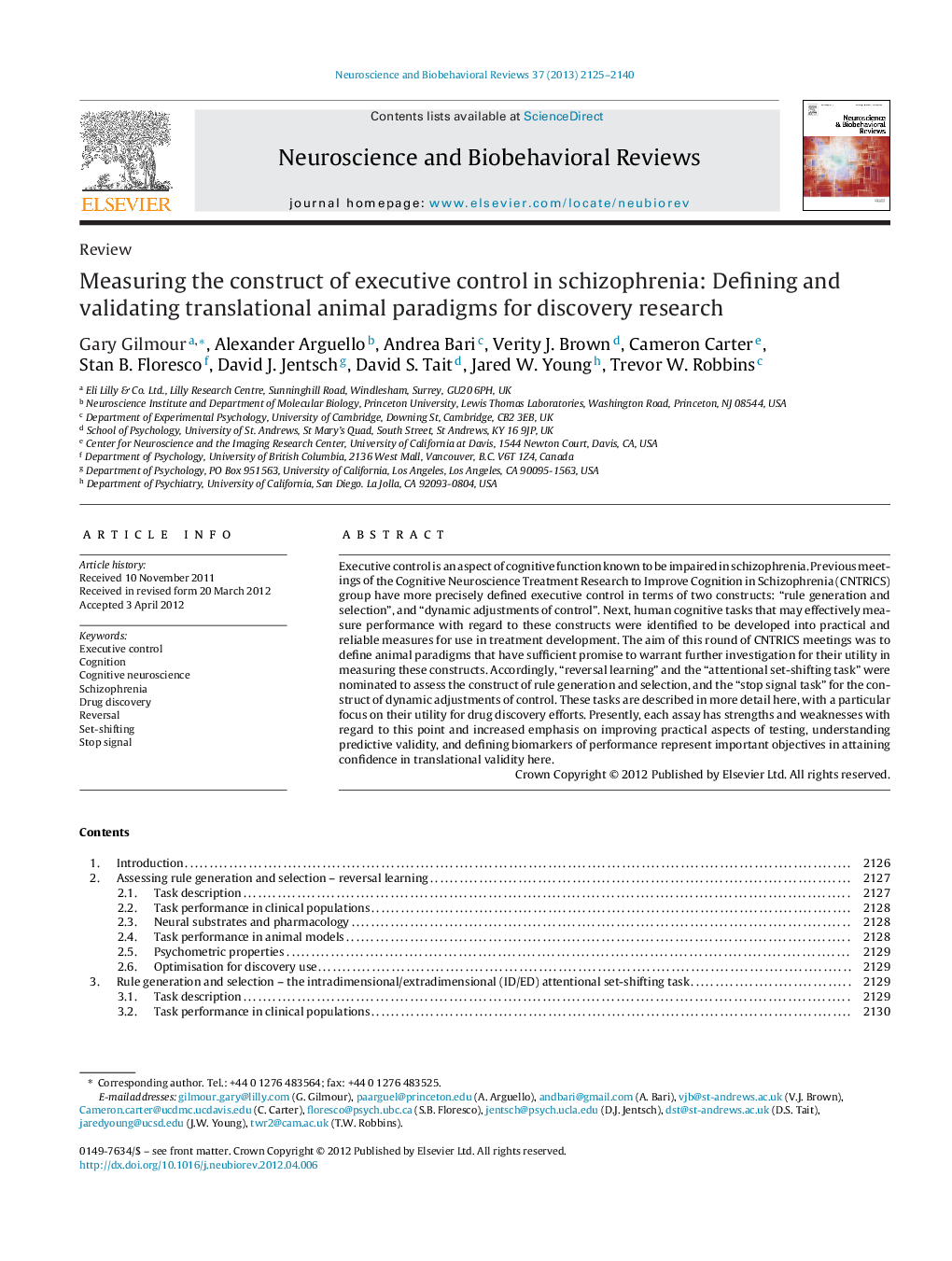| Article ID | Journal | Published Year | Pages | File Type |
|---|---|---|---|---|
| 937455 | Neuroscience & Biobehavioral Reviews | 2013 | 16 Pages |
Executive control is an aspect of cognitive function known to be impaired in schizophrenia. Previous meetings of the Cognitive Neuroscience Treatment Research to Improve Cognition in Schizophrenia (CNTRICS) group have more precisely defined executive control in terms of two constructs: “rule generation and selection”, and “dynamic adjustments of control”. Next, human cognitive tasks that may effectively measure performance with regard to these constructs were identified to be developed into practical and reliable measures for use in treatment development. The aim of this round of CNTRICS meetings was to define animal paradigms that have sufficient promise to warrant further investigation for their utility in measuring these constructs. Accordingly, “reversal learning” and the “attentional set-shifting task” were nominated to assess the construct of rule generation and selection, and the “stop signal task” for the construct of dynamic adjustments of control. These tasks are described in more detail here, with a particular focus on their utility for drug discovery efforts. Presently, each assay has strengths and weaknesses with regard to this point and increased emphasis on improving practical aspects of testing, understanding predictive validity, and defining biomarkers of performance represent important objectives in attaining confidence in translational validity here.
► CNTRICS meeting on animal paradigms of executive control in schizophrenia. ► Reversal learning and set shifting task nominated for rule generation and selection. ► Stop signal task nominated for dynamic adjustments of control. ► Emphasis on translation validity requires further effort. ► Pragmatics, biomarkers and predictive validity of tasks can all be improved.
